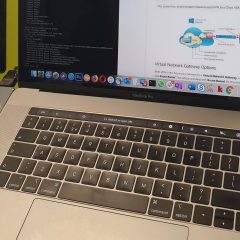Windows Deployment Services and Symantec Ghost
KB ID 0000108 Problem There’s very little about this that seems to be stored in one place out there on the Internet, Why would you want to use Ghost and WDS together anyway? Well once upon a time we used the PXE element is RIS, (WDS’s Predecessor) to use the Symantec GhostCast server. So yes I understand why people raise an eyebrow because you can achieve all your imaging needs with WDS alone. however people have invested...
Adding Drivers to Images on WDS
KB ID 0000314 Problem Before Server 2008 R2 when we needed to inject drivers into our WDS images we had to do it like this. Now however the process is a lot more elegant! Simply import the drivers into WDS, then inject them into the boot images (Yes the boot images NOT the Windows Images you are deploying!) Solution Add Driver Packages to Image is “Greyed out” If while attempting to add drivers, the option to “Add...
WDS – PXE Boot Error TFTP Timeout
KB ID 0000485 Problem Seen when using WDS on Windows Server 2008 (and 2008 R2). When attempting to PXE boot a client machine, it sucessfully gets an IP address. But it times out at the TFTP stage. This is a common occurance if the WDS server is also a DNS server. It happens on machines that have had the MS08-037 security update installed. Basically the ports that WDS needs are being reserved for DNS. Solution 1. On the WDS server...
WDS – “The Network Path was not found” when adding an Unattend file
KB ID 0000487 Problem Saw this last week, while trying to use an unattended file for the roll out of some machines with WDS. Every time you try and enter a value you get “The network path was not found” error, no combination of file path or UNC path seems to cure the problem. Solution This is a “work around” not a fix, essentially it will not accept any value you put into the path without throwing and error. If...
WDS – Unattended file – Removing /Formatting Drive Partitions
KB ID 0000490 Problem Over the last couple of years I’ve done a lot of imaging of School PC’s I don’t know why but they come with a myriad of different drive and partition configurations. Even big vendors like HP and Dell ship their machines with recovery partitions these days. If you are imaging with WDS this can cause a problem so what I usually want to do is remove all the partitions, create one big one that...
WDS – Unattended file – Joining a Domain Automatically
KB ID 0000494 Problem During a large rollout the more things you can automate the better, before you continue though be aware of one thing… You can only automatically join a client to a domain if it has an auto generated random machine name!* *Note: This is not 100% true, if you pre-stage the computer objects into Active Directory with the GUID of the machine (you can see this on the screen at pXe boot time, or get it from the...
Windows Deployment Services – Asks for Locale and Keyboard
KB ID 0000734 Problem Seen when deploying images with WDS, even though you have specified language, and keyboard settings in your answerfile. The system still asks you to set the language and keyboard options. For a couple of machines you might put up with this, but for a few thousand machines it can get quite annoying! Solution There is a reason it’s doing this, and it’s because the next thing it asks you to do is...
Windows Deployment Services (On Server 2008 R2) Deploying Windows 7
KB ID 0000180 Problem It’s been a while since I posted run through’s on WDS – they were on Server 2003, and were for deploying Windows XP. I’ve completely re-written this page and shot a series of videos to make the process a little easier to understand. Solution Step 1 Notes 1. If the WDS Server is NOT the DHCP server then do NOT tick both the DHCP options, (as stated in the video), on your DHCP scope...









